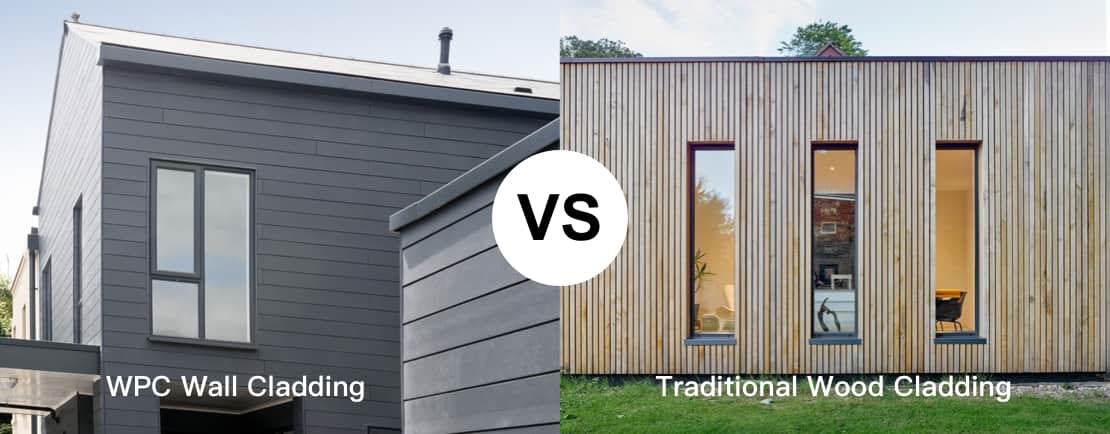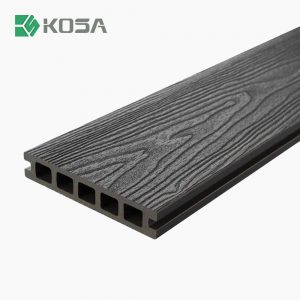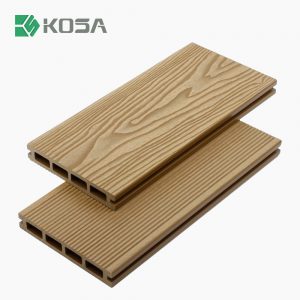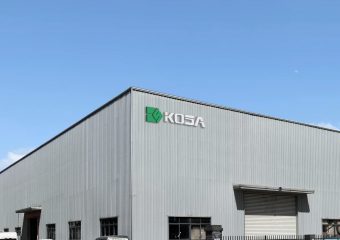When choosing between WPC wall cladding and traditional wood for your siding, both materials have their own advantages. However, depending on your priorities, whether it is durability, maintenance, cost or environmental impact, WPC wall cladding tends to win out. Let’s compare:

1. Durability
WPC Wall Cladding: Very durable and resistant to rot, moisture, termites and extreme weather conditions. WPC wall cladding will not warp, crack or splinter over time, making it ideal for long-term outdoor use.
Traditional Wood: While wood has a natural and classic aesthetic, it is susceptible to rot, mold, insects and weathering, especially in humid or rainy environments.
2. Maintenance
WPC Wall Cladding: Little to no maintenance is required. It does not require regular painting, staining or sealing and can be cleaned with water and soap.
Traditional Wood: Wood requires ongoing maintenance, such as painting, staining or sealing, to protect it from moisture and weather damage. It can crack, warp or rot over time, requiring frequent repairs.
3. Aesthetics
WPC Wall Cladding: Modern WPC wall cladding is designed to closely mimic the look of natural wood, available in a variety of textures, colors, and finishes. And combines the natural look of wood with the durability of composite materials.
Traditional Wood: Natural wood has a unique organic appeal that some homeowners prefer. However, without proper care, it can lose its beauty over time due to fading, warping, or weather damage.
4. Environmental Impact
WPC Wall Cladding: Made from a blend of wood fibers and plastic, it’s an environmentally friendly choice. It reduces the demand for raw wood and repurposes plastic waste, contributing to sustainable development.
Traditional Wood: While wood is a renewable resource, overuse of natural wood can lead to deforestation. In addition, the chemicals used to treat and maintain wood can have an impact on the environment.
5. Cost
WPC Wall Cladding: While WPC may have a higher upfront cost, its long life and low maintenance costs make it a more cost-effective choice in the long run.
Traditional Wood: The initial cost of wood may be lower, but the ongoing maintenance costs, including repairs, staining, and sealing, can add up over time.
6. Installation
WPC Wall Panels: Generally easier to install, with an interlocking system and consistency of planks, making for a quicker and more efficient installation process.
Traditional Wood: Wood cladding may require more precision during installation, and planks may have inconsistencies that require cutting, so it may take more time to install.
Conclusion: Which is Better?
WPC wall cladding is the best choice for those looking for a low-maintenance, durable, and eco-friendly solution. While traditional wood may offer a more authentic natural look, WPC’s long-term durability, ease of care, and sustainability make it a better investment for many homeowners and businesses looking to improve their exterior design.





